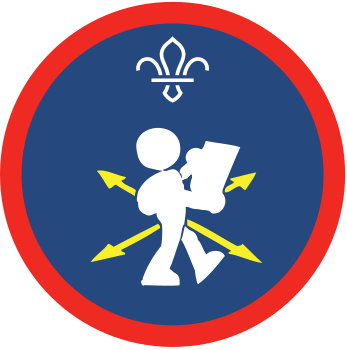Orienteering safety rodeo
You’ll need
- Scissors
- Sticky tape
- Container or hat
- Scrap paper, as needed
Before you begin
- Print and cut out the ‘Safety in orienteering situations’.
- Place the cut-out hazards into a container or hat and shuffle them around.
Get your group talking
- Split into groups of two or three. Each group should pick some hazards from out of the container or hat. They should keep picking until none remain but make sure each group has the same amount of hazards.
- In their groups, everyone should examine their hazards and think about ways they could be avoided or how someone should respond to them.
- Everyone should come together again and discuss the ways to avoid and responses toward each hazard. Leaders and helpers should encourage everyone to include any alternative answers they might’ve come up with, even if some other suitable answers have already been given. Better safe than sorry!
- A leader or helper should go through the ‘Safety in orienteering answers’ below to check that they’re all covered by the group’s discussions.
Safety advice rodeo
- Now, collect in the cut-out hazards, return them to the container or hat and shuffle them around. Have everyone line up facing the opposite wall, or just shut their eyes.
- Stick a hazard to each person’s back with tape. Make sure no-one tries to look at the hazard on their own back. It doesn’t matter if two or more people have the same hazard.
- Everyone can now open their eyes and move around the activity area. They should be able to read the hazards on other people’s backs. They may not reveal what these are, but may give that person safety advice, based on what their hazard is.
- Everyone should try to guess what hazard is on their back. When everyone’s got it, take off the hazards, reshuffle them and play again in the same way from step five. Continue until everyone’s worked out a few hazards.
|
Hazard |
How to avoid or respond |
|
Running injuries – including shin splints, strains, sprains and blisters |
|
|
Impact injuries – from falling on steep, rocky, slippery or loose terrain |
|
|
Eye injuries – from tree branches hitting into the face |
|
|
Being unfit |
|
|
Skin injuries – abrasions, cuts, bruises |
|
|
You haven’t finished the course and it’s getting late |
|
|
Inexperience at orienteering |
|
|
Running in all weather |
|
|
Dehydration |
|
|
Your map gets wet |
|
|
You hear a distress whistle |
|
|
Ticks and insect bites |
|
|
You’re lost or injured |
|
|
You’re orienteering in a new place |
|
|
Sunburn |
|
|
Nettle stings or cuts from brambles |
|
Reflection
Everyone got the opportunity to practice communication skills in this activity, which are important when dealing with hazards. Did talking within the smaller group give you confidence to share ideas within the larger group? Never be afraid to say what’s on your mind, because there’s no other way of finding out if anyone else has thought of the same thing, or whether it didn’t occur to them. In the hazard guessing game, what safety tips made your hazards the easiest to guess? The quicker you know the situation, the quicker you’re able to respond to it or avoid it, so communicating clear safety advice is something everyone should practice if they’re keen orienteers.
This activity helped you learn about safety and being responsible while orienteering. Take a moment to think about what being responsible means; perhaps think of a time when you had to take responsibility for someone or something and how that felt. Why is it important to stay safe when orienteering? Putting safety first can help you prevent injury during activities and keep everyone having fun. Also, many of the safety ideas here can help you keep your friends and family safe when you’ve stepped off the orienteering course.
Safety
All activities must be safely managed. You must complete a thorough risk assessment and take appropriate steps to reduce risk. Use the safety checklist to help you plan and risk assess your activity. Always get approval for the activity, and have suitable supervision and an InTouch process.
- Scissors
Supervise young people appropriately when they’re using scissors. Store all sharp objects securely, out of the reach of young people.
- Think up more hazards associated with orienteering indoors and outdoors, and write them on scraps of paper to include as part of your game, to make it more difficult.
- The hazard guessing game could be extended with a bonus round where the hazard on each person’s back should be acted out, and no-one is allowed to speak.
- If anyone would prefer not to share their ideas outside the small groups, they could have a person from their small group share the idea for them. Talking in smaller groups first will often give young people more confidence to share their ideas more widely.
- Check that everyone is involved in discussions, both in the small groups and altogether.
All Scout activities should be inclusive and accessible.
If some members of your group are experienced in orienteering, they may wish to share their experiences with others and perhaps talk to the rest of the group about any extra safety measures they know.
Everyone had the chance to give their peers safety advice, rather than hearing it from a leader or helper. Ask questions to get everyone thinking in this activity, rather than giving them the answers. Have them consider alternatives to ideas that aren’t 100% suitable and encourage them to nail the best possible responses and ways to avoid orienteering hazards.

